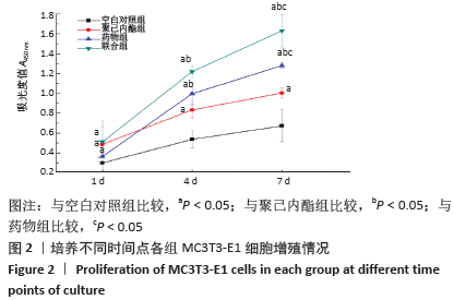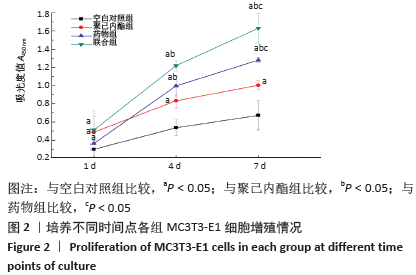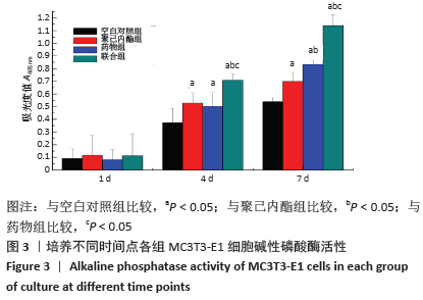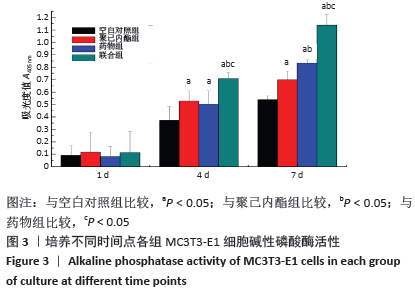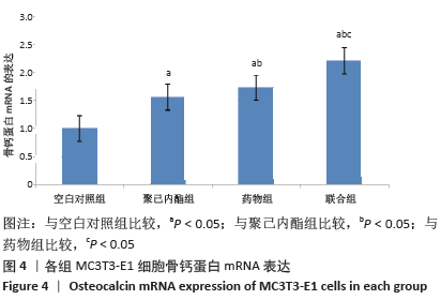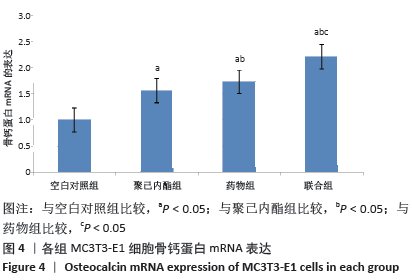[1] SCHWARZ F, DERKS J, MONJE A, et al. Peri-implantitis. J Periodontol. 2018;89 Suppl 1:S267-S290.
[2] ALSAADI G, QUIRYNEN M, KOMÁREK A, et al. Impact of local and systemic factors on the incidence of late oral implant loss. Clin Oral Implants Res. 2008;19(7):670-676.
[3] AJAMI E, MAHNO E, MENDES VC, et al. Bone healing and the effect of implant surface topography on osteoconduction in hyperglycemia. Acta Biomater. 2014;10(1):394-405.
[4] CHAMBRONE L, PALMA LF. Current status of dental implants survival and peri-implant bone loss in patients with uncontrolled type-2 diabetes mellitus. Curr Opin Endocrinol Diabetes Obes. 2019;26(4): 219-222.
[5] HENNEICKE H, GASPARINI SJ, BRENNAN-SPERANZA TC, et al. Glucocorticoids and bone: local effects and systemic implications. Trends Endocrinol Metab. 2014;25(4):197-211.
[6] 苏野,邵聆.1型糖尿病小鼠下颌密质骨厚度特点的研究[J].口腔医学研究,2018,34(6):619-622.
[7] AKILEN R, TSIAMI A, DEVENDRA D, et al. Cinnamon in glycaemic control: Systematic review and meta analysis. Clin Nutr. 2012;31(5):609-615.
[8] WU Z, YAN D, XIE Z, et al. Combined treatment with cinnamaldehyde and PTH enhances the therapeutic effect on glucocorticoid-induced osteoporosis through inhibiting osteoclastogenesis and promoting osteoblastogenesis. Biochem Biophys Res Commun. 2018;505(3): 945-950.
[9] 王松松,马向瑞,张云涛.桂皮醛对高糖环境下MC3T3-E1成骨细胞增殖与分化的影响[J].口腔医学研究,2019,35(7):712-715.
[10] PATEL S, PATEL G. A Review and Analysis on Recent Advancements in Bubble Electrospinning Technology for Nanofiber Production. Recent Pat Nanotechnol. 2019;13(2):80-91.
[11] 姜岩,李晓龙,于利.电纺丝技术制备生物活性复合纤维支架及其体外降解性[J].中国组织工程研究与临床康复,2011,15(8): 1373-1376.
[12] 劳丽春.药物缓释载体材料类型及其临床应用[J].中国组织工程研究与临床康复,2010,14(47):8865-8868.
[13] CHEN S, LI R, LI X, et al. Electrospinning: An enabling nanotechnology platform for drug delivery and regenerative medicine. Adv Drug Deliv Rev. 2018;132:188-213.
[14] 余晓宏,税艳青.牙周组织工程人工骨支架材料研究进展[J].实用口腔医学杂志,2018,34(2):274-276.
[15] MOHAMMADIAN F, EATEMADI A. Drug loading and delivery using nanofibers scaffolds.Artif Cells Nanomed Biotechnol. 2017;45(5): 881-888.
[16] RANGANATHAN S, BALAGANGADHARAN K, SELVAMURUGAN N. Chitosan and gelatin-based electrospun fibers for bone tissue engineering. Int J Biol Macromol. 2019;133:354-364.
[17] SHARIFI E, AZAMI M, KAJBAFZADEH AM, et al. Preparation of a biomimetic composite scaffold from gelatin/collagen and bioactive glass fibers for bone tissue engineering. Mater Sci Eng C Mater Biol Appl. 2016;59:533-541.
[18] 王俊成.miR-467f对高糖环境下小鼠骨髓间充质干细胞成骨分化的调节机制研究[D].北京:中国人民解放军医学院,2013
[19] MA PX. Biomimetic materials for tissue engineering. Adv Drug Deliv Rev. 2008;60(2):184-198.
[20] 李楠,王雪明,齐宏旭,等.电纺丝聚乳酸、聚3羟基丁酸酯共聚4羟基丁酸酯和聚碳酸亚丙酯纳米纤维的制备及表面亲水性[J].中国组织工程研究与临床康复,2010,14(12):2273-2276.
[21] ASHRAF R, SOFI HS, MALIK A, et al. Recent Trends in the Fabrication of Starch Nanofibers: Electrospinning and Non-electrospinning Routes and Their Applications in Biotechnology. Appl Biochem Biotechnol. 2019;187(1):47-74.
[22] WU Z, WENG S, YAN D, et al. Administration of cinnamaldehyde promotes osteogenesis in ovariectomized rats and differentiation of osteoblast in vitro. J Pharmacol Sci. 2018;138(1):63-70.
[23] MALIKMAMMADOV E, TANIR TE, KIZILTAY A, et al. PCL and PCL-based materials in biomedical applications. J Biomater Sci Polym Ed. 2018;29(7-9):863-893.
[24] 周思佳,姜文学,尤佳.骨缺损修复材料:现状与需求和未来[J].中国组织工程研究,2018,22(14):2251-2258.
[25] ADISAKWATTANA S. Cinnamic Acid and Its Derivatives: Mechanisms for Prevention and Management of Diabetes and Its Complications. Nutrients. 2017;9(2):163.
[26] 姚顺晗,韦华成,覃家港,等.罗汉果苷V促进LncRNA TUG1表达刺激成骨细胞的增殖与分化[J].中国组织工程研究,2020, 24(26):4129-4134.
[27] İŞOĞLU İA, BÖLGEN N, KORKUSUZ P, et al. Stem cells combined 3D electrospun nanofibrous and macrochannelled matrices: a preliminary approach in repair of rat cranial bones. Artif Cells Nanomed Biotechnol. 2019;47(1):1094-1100.
[28] KIM SE, YUN YP, LEE JY, et al. Co-delivery of platelet-derived growth factor (PDGF-BB) and bone morphogenic protein (BMP-2) coated onto heparinized titanium for improving osteoblast function and osteointegration. J Tissue Eng Regen Med. 2015;9(12):E219-E228.
[29] MARTÍN-FERNÁNDEZ M, VALENCIA K, ZANDUETA C, et al. The Usefulness of Bone Biomarkers for Monitoring Treatment Disease: A Comparative Study in Osteolytic and Osteosclerotic Bone Metastasis Models. Transl Oncol. 2017;10(2):255-261.
[30] FERRON M, HINOI E, KARSENTY G, et al. Osteocalcin differentially regulates beta cell and adipocyte gene expression and affects the development of metabolic diseases in wild-type mice. Proc Natl Acad Sci U S A. 2008;105(13):5266-5270.
[31] 刘长路,马丽波,刘晓民,等.高糖环境LIF介导STAT3/SOCS3信号通路参与成骨细胞分化机制研究[J].中国骨质疏松杂志,2020, 26(2):191-197.
[32] WONGDEE K, CHAROENPHANDHU N. Osteoporosis in diabetes mellitus: Possible cellular and molecular mechanisms. World J Diabetes. 2011; 2(3):41-48.
[33] ADISAKWATTANA S. Cinnamic Acid and Its Derivatives: Mechanisms for Prevention and Management of Diabetes and Its Complications. Nutrients. 2017;9(2):16. |


